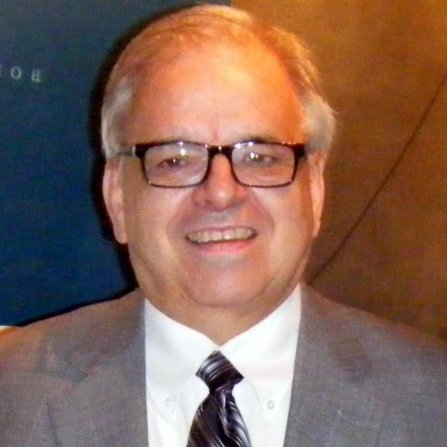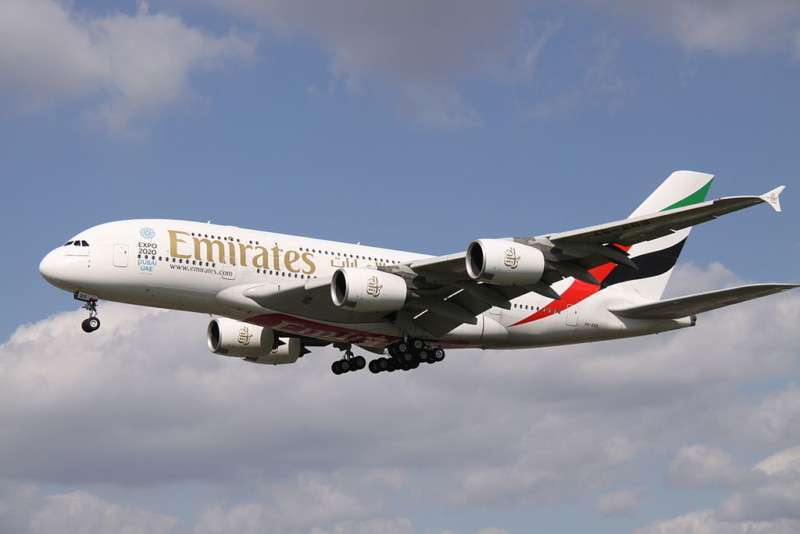At this writing, Dubai Expo 2020 has less than two years to opening day.
In 2013, the city of Dubai was selected to host a six-month world’s fair – the first such to be held in the Middle East, Africa and South Asia region in the 170-year history of world’s fairs. The United Arab Emirates government is investing $7 billion in this Expo which will cover 1,200 acres and include pavilions from 192 countries (see InPark’s video previews of many Dubai 2020 pavilions; part 1, part 2 and part 3). The Dubai 2020 theme is “Connecting Minds, Creating the Future”; sub-themes are Sustainability, Mobility and Opportunity.
Photo at top: An Emirates plane bears the Dubai 2020 logo. Photo from http://www.aeroprints.com/
Story by world’s fair specialist and consultant James Ogul, author of “Tales from the Expo,” published online by InPark.
The Dubai 2020 organizers have brought a creative approach to the project. During its six-month run (October 20, 2020 – April 10, 2021) organizers project 25 million visits, 70% of those to come from outside the United Arab Emirates. No other world’s fair has factored in such a high percentage of foreign visitors (see https://www.inparkmagazine.com/dubai-2020-the-tourist-destination/).
There are two types of world’s fairs sanctioned by the Bureau International des Exhibitions (BIE) – larger ones that last six months and occur every five years, and smaller, three-month fairs that occur between the larger ones. Most recently there was a three-month expo in 2017 at Astana (now Nursultan), Kazakhstan, preceded by Milan’s six-month event in 2015, which drew 23 million visits. Although the United States has not hosted a World’s Fair since 1984 in New Orleans, since then there have been 14 such events in other parts of the world.
Unique architecture and exhibits
So far, at least 35 countries participating in Expo 2020 have published pavilion designs. One of the things that distinguishes a six-month world’s fair is that most international exhibitors design their own pavilion buildings in addition to the exhibits those buildings will house, to present themselves to the world in the context of the expo theme. Each strives to make a unique statement and stand out among the others, which results in the event being something of an architectural competition. The intense competition and the remarkable, often pioneering pavilion designs that result are part of the attraction of world’s fairs. Out of the 192 participating countries, 81 will build their own pavilion and 111 will lease space in Expo-built buildings. A joint venture between UK engineering firms Jacobs and Mace has been named Expo 2020 Dubai’s Official Programme Delivery Management Provider and will monitor the plans and construction of the 81 self-build pavilions by other contractors.
Visitors can expect to see innovative exhibitions as well; world’s fairs have always been a laboratory for creative storytelling and new applications of technology – sometimes, the first large-scale public introduction of something that is later widely adopted. For example, back in 1982 the US pavilion at Knoxville worked with MIT to introduce touch screens to the public. These interfaces, so common today were so novel then that the staff had to tell visitors it was OK to touch the screens.
Construction milestones
A major milestone was recently achieved when Expo 2020 completed construction on its three Thematic Districts. Opportunity, Mobility and Sustainability. Forming the largest built-up area of the site and including 86 low-rise buildings that will house dozens of country pavilions, food and beverage outlets, retails, performance spaces and leisure areas, each district will be anchored by its own thematic pavilion and connected to the central Al Wasl Plaza. The three districts include facades resembling traditional Emirati wind towers and walkways lined with plants indigenous to the UAE. They incorporate smart shading, solar cells and moisture capturing devices, as well as an underground network for logistics support.
The next major construction milestone will be the completion of Al Wasl Plaza, the site’s iconic centrepiece. Designed by Adrian Smith – Gordon Gill Architecture, it is being built by Cimolai Rimond Middle East Contracting. The structure, has been designed to resemble the Expo 2020 logo and is a long-span shell structure that surrounds the central plaza area and rises to a height of 67 m. Al Wasl Plaza was more than 60% complete at this writing and due to be finished within a few weeks.
“Arabian Business” recently reported that approximately 40,000 workers are expected to be on-site at the peak of construction activity this year and over 25,000 suppliers from 149 countries are registered to do business with Expo 2020. Several countries have already begun building their pavilions, including the Czech Republic, the U.K., the Netherlands, France, Germany, New Zealand and Thailand. No word yet on the United States as its pavilion is dependent on raising $60 million from the private sector and construction cannot be started until sufficient funding is assured. The U.S. is the only G7 country with no government financial support, a policy going back to 1994.
142,000 daily visits
When the Expo opens in Dubai, organizers have to be prepared for 142,000 expo visits a day through the six months of the expo, If as predicted, 70% of the visits are from overseas, a large component will come from airport traffic. At present, 79 million travelers pass through Dubai’s airports each year, but most do not stay over. Expo officials intend that the attraction of the fair will change that.
Local transportation needed to move the large influx of visitors has stimulated road improvements, airport upgrades , and a new dedicated metro line. In all, Dubai’s government has spent over $40 billion on infrastructure improvements. Hosting a world expo positions a city and a region to accomplish infrastructure improvements of this kind and is one of the big incentives that drive cities to compete for the hosting privilege.
Naturally, the influx of visitors for a world expo means that overnight lodging demands will grow, and the host city must prepare for these. At the beginning of 2015, Dubai had approximately 94,000 hotel rooms available, according to the GCC Hospitality & Leisure-Recreation 2016 report. In June 2019, that number had grown to 100,000 rooms, with some 164,000 rooms projected by the time the Expo is underway.
For 170 years, World Expos have invited counties to focus on furthering humanity for the common good through innovation, cultural exchange, creativity and collaboration. As Vicente G. Loscertales, head of the BIE, recently pointed out, “By inviting all countries of the world to take part, the organizers of Expo 2020 are genuinely reflecting the universal spirit of World Expos.”







